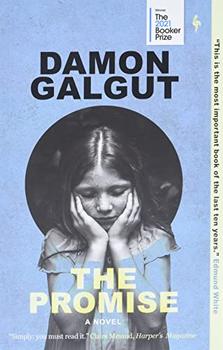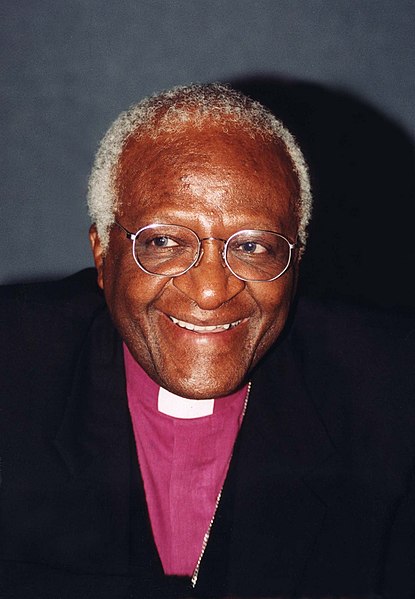Summary | Excerpt | Reviews | Beyond the Book | Read-Alikes | Genres & Themes | Author Bio

Critics' Opinion:
Readers' Opinion:
First Published:
Apr 2021, 256 pages
Paperback:
Mar 2022, 272 pages
 Book Reviewed by:
Book Reviewed by:
Kim Kovacs
Buy This Book
This article relates to The Promise
 Damon Galgut's novel The Promise is set in South Africa during the dismantling of the country's apartheid system. In this period, the Truth and Reconciliation Commission (TRC) was established to deal with the after-effects of apartheid, and the body is mentioned several times throughout the book.
Damon Galgut's novel The Promise is set in South Africa during the dismantling of the country's apartheid system. In this period, the Truth and Reconciliation Commission (TRC) was established to deal with the after-effects of apartheid, and the body is mentioned several times throughout the book.
After the National Party took power in South Africa in 1948, they installed an all-white government and began to legislate a system that codified existing racial inequities into law and built on a history of racist policies. This system became known as apartheid (meaning "apartness" in Afrikaans), a word used as a campaign slogan/promise during the election that put the National Party in control. Over time, the restrictions and abuses leveled at the country's non-white majority became increasingly severe; Black people and other residents of color were forcibly removed from their property and prohibited from owning land in about 80% of the country, "pass laws" were instituted — whereby non-white people had to carry papers to prove they were allowed in most cities, segregation was enacted that separated not only white and non-white citizens but also groups of color from one another, and interracial marriage and sex was prohibited.
Black people and other people of color staged many protests over the ensuing decades — some that were met with police violence — and apartheid was condemned by the international community. The United Nations General Assembly denounced the system in 1973, and in 1985 the United States and Great Britain implemented sanctions, at which point South Africa's leaders began to roll back its restrictions. F.W. de Klerk became the country's leader in 1989 and instituted legal reforms, culminating in a new constitution in 1994 and a coalition government made up of a majority of non-white people, marking the official end of the apartheid system.
In July 1995, the new government authorized the formation of the TRC with Archbishop Desmond Tutu as its chair, its purpose "to promote re-conciliation and forgiveness among perpetrators and victims of apartheid." Its emphasis was on gathering information to help promote understanding — thereby helping the nation to heal — rather than on punishing those who had committed human rights abuses. This was a practical compromise, since the military — many of whom were guilty of these crimes — weren't on board with de Klerk's plan and the situation was unstable, yet some sort of accountability was seen as crucial for moving forward.
The Commission listed three goals, and created committees to oversee them. The Human Rights Violations (HRV) Committee was responsible for investigating and documenting human rights abuses that took place between 1960 and 1994. They were charged with identifying victims and the nature of the harm they suffered, and determining if the violations were the result of deliberate planning by any organization or person.
Once the HRV issued a full report on a specific incident the case was referred to the Reparations and Rehabilitation (R&R) Committee for further action. The main goal of this committee was to help restore victims' dignity, and to provide recommendations on rehabilitation, support and reparations.
Finally, the Amnesty Committee (AC) was established to consider applications for amnesty for those guilty of human rights violations. It staged public hearings at which victims testified to the abuses they'd undergone or witnessed, ultimately receiving statements from over 22,000 victims and amnesty applications from more than 7,000 individuals.
The Committee issued several recommendations, including for a reparations program that would pay victims approximately 3,500 USD per year for six years. They also advised prosecuting cases where amnesty was not sought or was denied, if evidence of violations existed. After publishing several reports, it disbanded in 2002.
Despite its limitations, the TRC was generally considered a success internationally and it became the model for many other countries seeking to address human rights abuses in their nations' histories. Many in South Africa, however, felt the Commission hadn't lived up to its promise. People who benefited from the apartheid system were able to avoid repercussions, and the reparations were slow in coming and far lower than recommended. Some high-ranking members of the military and government who were denied amnesty (or who never bothered to apply in the first place) were able to avoid prosecution or received suspended sentences. Former President P.W. Botha, for example, refused to appear before the commission. He was fined and given a suspended sentence, which was later overturned.
Archbishop Desmond Tutu in 1999, via John Mathew Smith & www.celebrity-photos.com (CC BY-SA 2.0)
Filed under People, Eras & Events
![]() This article relates to The Promise.
It first ran in the February 2, 2022
issue of BookBrowse Recommends.
This article relates to The Promise.
It first ran in the February 2, 2022
issue of BookBrowse Recommends.





The House on Biscayne Bay
by Chanel Cleeton
As death stalks a gothic mansion in Miami, the lives of two women intertwine as the past and present collide.

The Flower Sisters
by Michelle Collins Anderson
From the new Fannie Flagg of the Ozarks, a richly-woven story of family, forgiveness, and reinvention.

The Funeral Cryer by Wenyan Lu
Debut novelist Wenyan Lu brings us this witty yet profound story about one woman's midlife reawakening in contemporary rural China.
Your guide toexceptional books
BookBrowse seeks out and recommends the best in contemporary fiction and nonfiction—books that not only engage and entertain but also deepen our understanding of ourselves and the world around us.